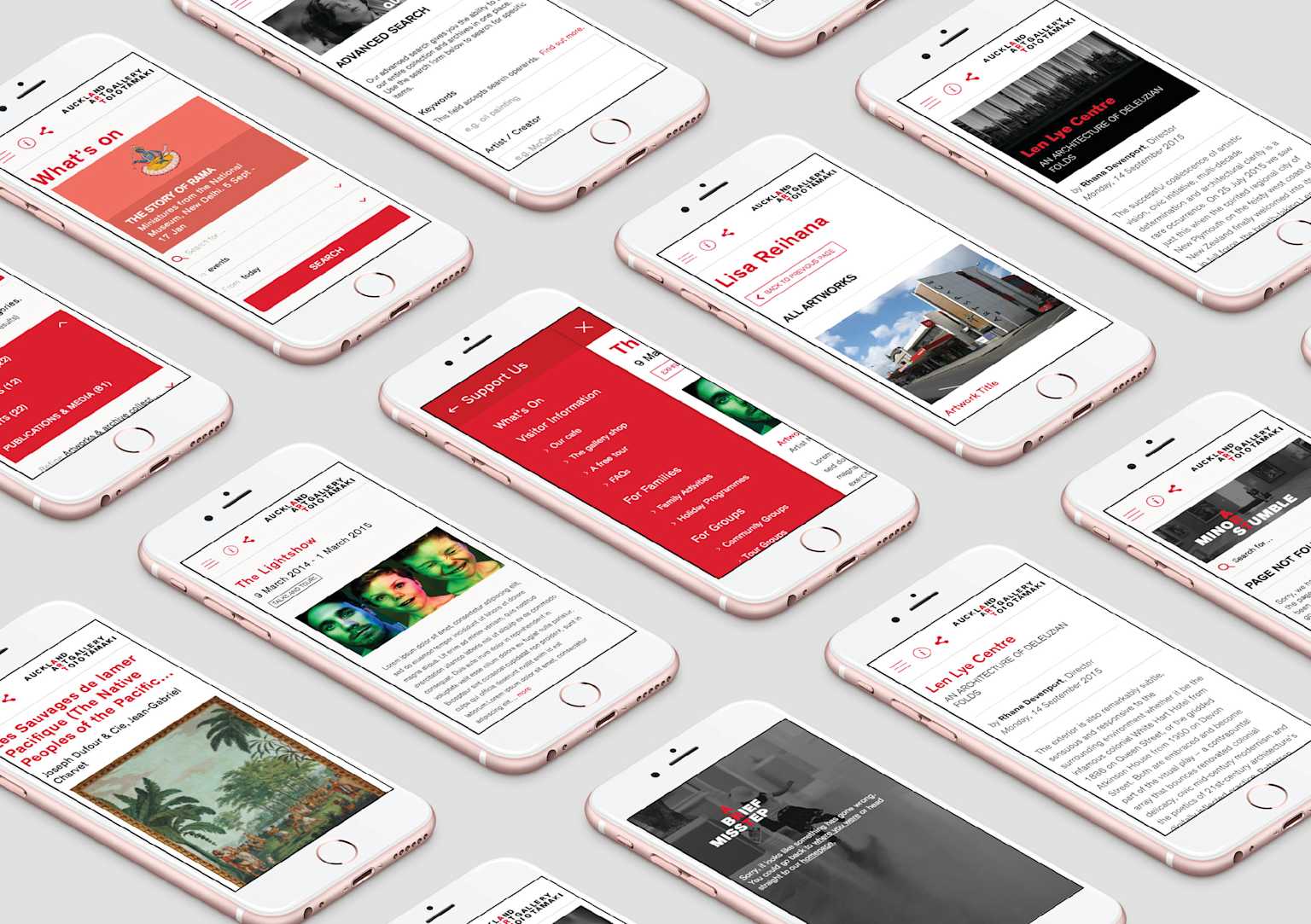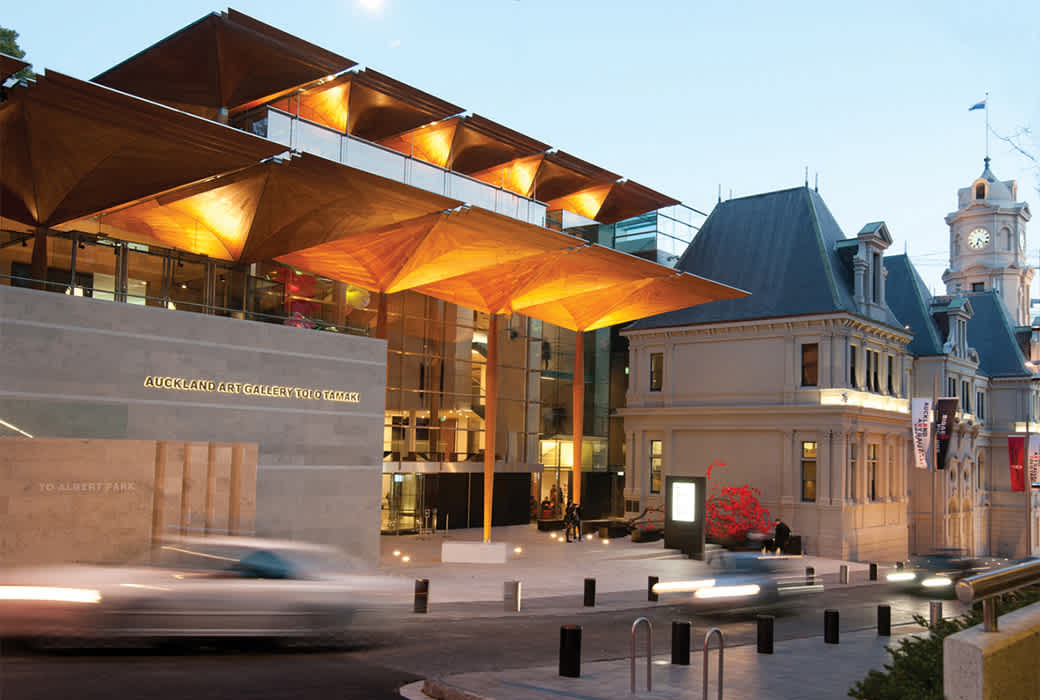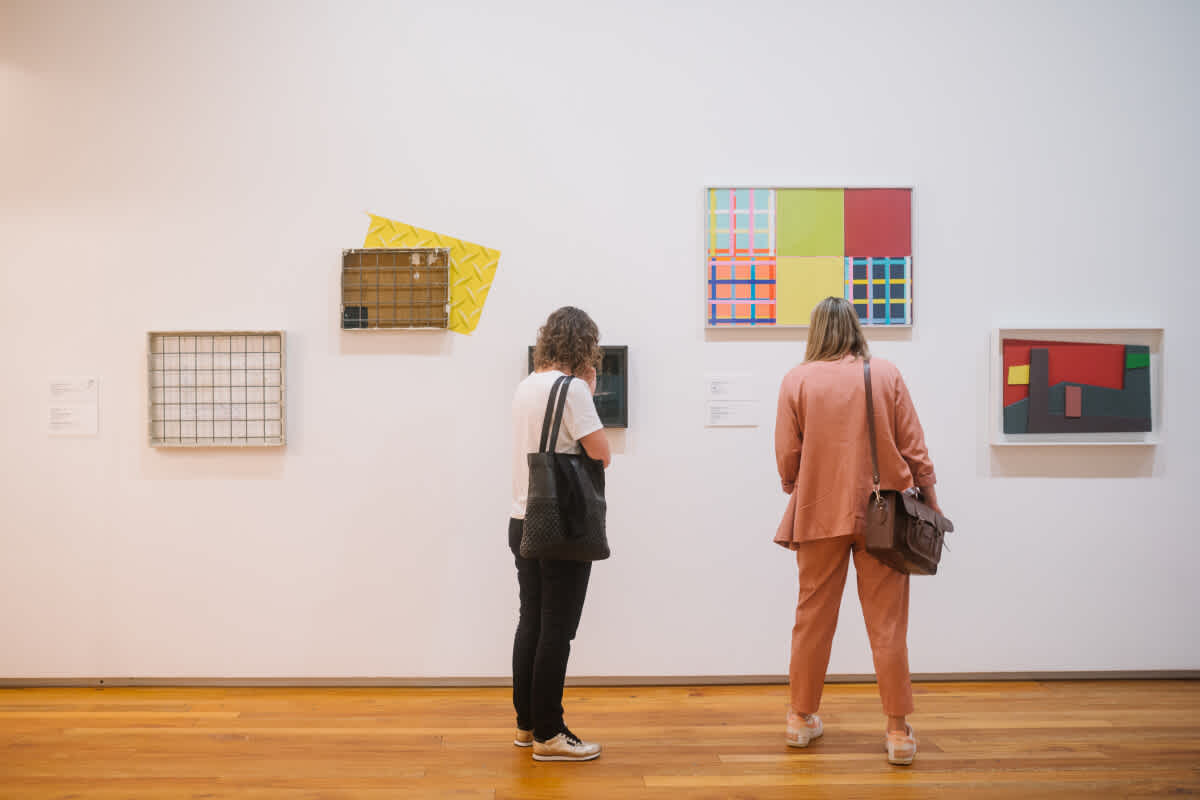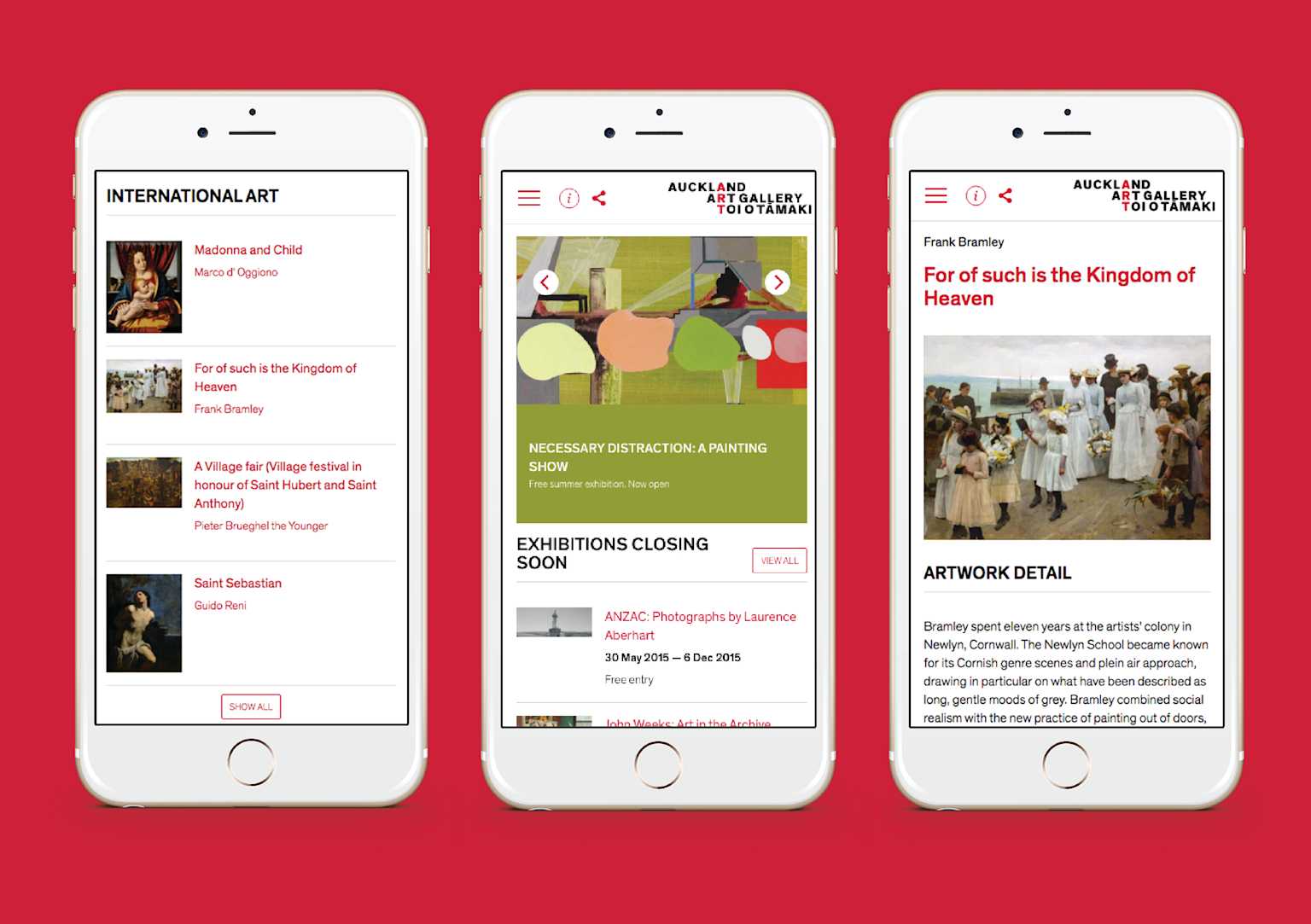Seamlessly Bridging Worlds: The Digital Evolution of Auckland Art Gallery
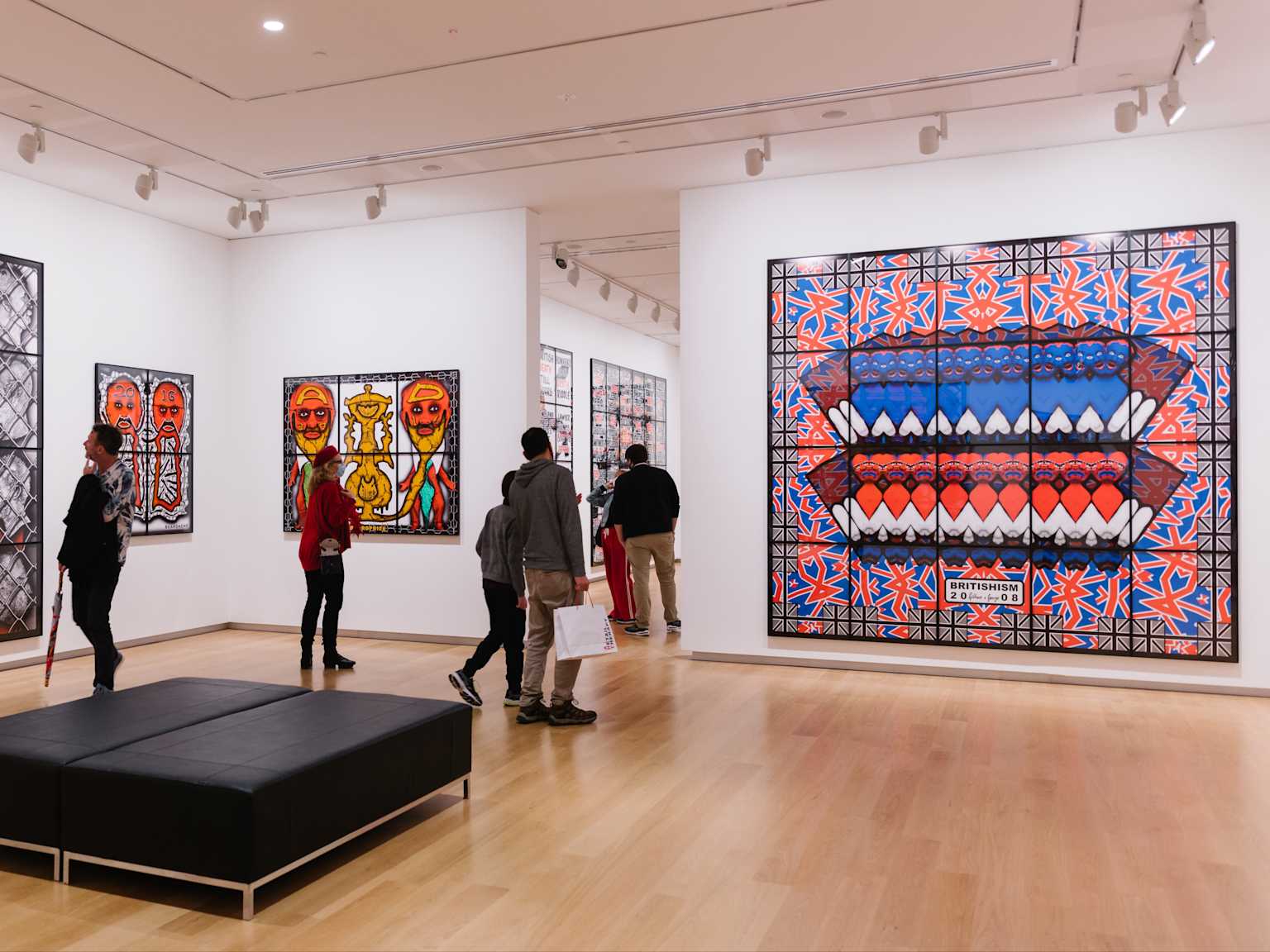
Auckland Art Gallery wanted to create an immersive online experience to extend its unique atmosphere and vast collection.
User-centric design
Consistent on-premise & off-premise experience
Complementary UI that hero's artworks
Flexible CMS to support future needs
Sensitivity to art presentation requirements
Vernon Collections integration
Continuous delivery
Auckland Art Gallery, located in central Auckland, holds one of NZ’s largest and most significant collections of NZ and international art.
Since 1888, the Gallery has acted as a cultural custodian for both Auckland, as well as New Zealand, housing and exhibiting thousands of artworks over nearly 130 years. Their permanent collection now sits at some 16,000 artworks.
To support their ongoing vision of enriching the community, the Gallery identified the need to extend their collection beyond the gallery walls. This was not possible with their existing site, and required a new solution.
More than a digital catalogue of information, the new site needed to be an extension of the gallery itself, form a foundation for future growth, and needed to integrate with the Gallery’s collection management system, Vernon.
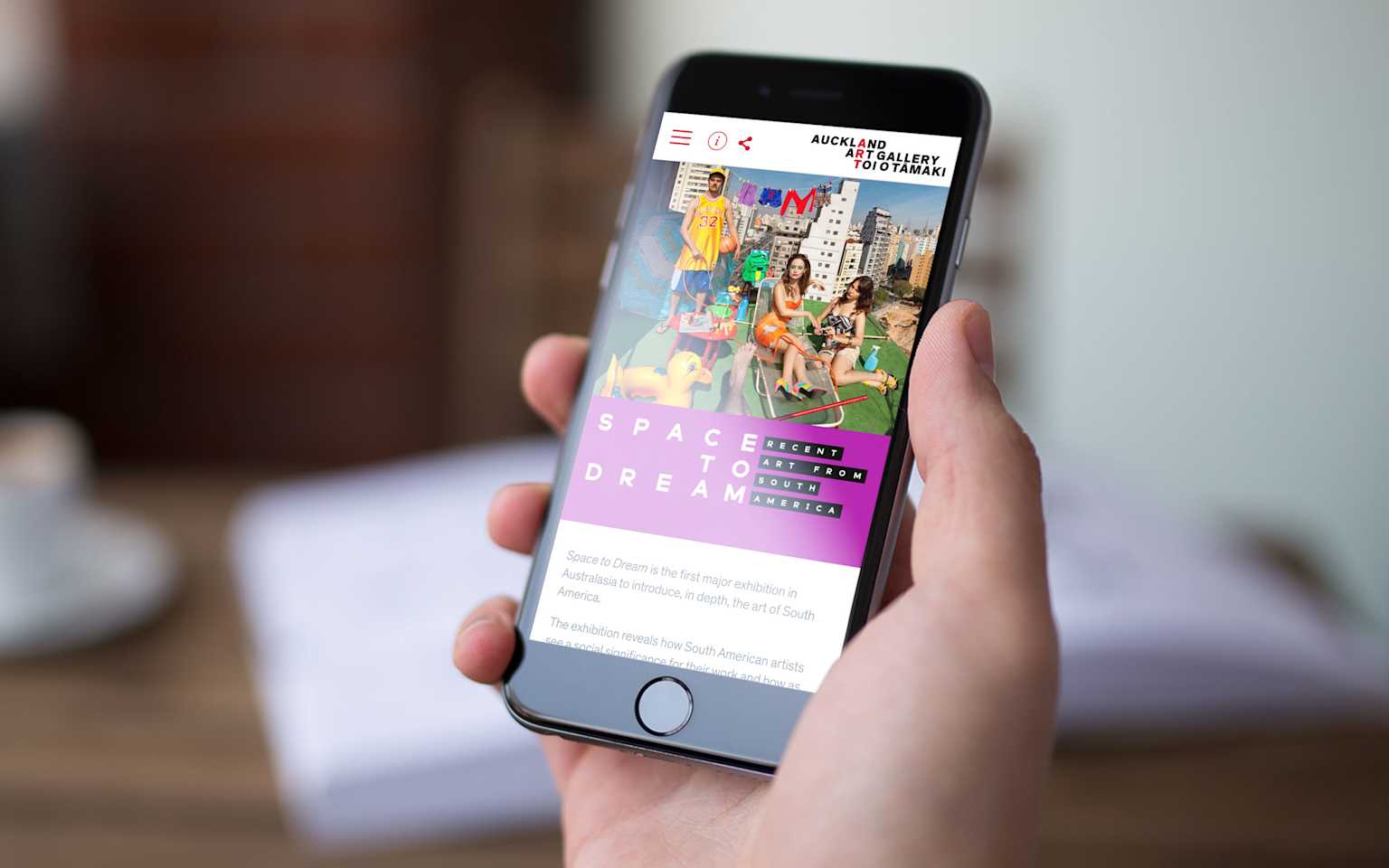
At Pixel Fusion, collaboration is at the heart of what we do.
For the Auckland Art Gallery project, we involved stakeholders at every stage, from initial design and ideation through to agile development. This constant communication ensured everyone was aligned, kept expectations realistic, and fostered a strong sense of ownership.
Understanding the Gallery’s goals and their users was crucial. We conducted a thorough review of the existing site and all previous work. This discovery process informed a set of guiding principles for the project.
Our design phase involved numerous iterations, aiming to develop consistent interaction patterns and UI modules. Visually, we created a UI that captured the Gallery’s atmosphere and spirit while letting the artwork take center stage. We consulted extensively with the Gallery on art sensitivity and online display conventions, embracing constraints to inspire creative solutions.
Once the initial design phase was complete, we had a solid conceptual model and indicative wireframes. These artifacts allowed us to design within each agile sprint, maintaining consistency and an overarching vision.
During development, we guided the Gallery through an agile process, which they found refreshing. This approach ensured transparency, adaptability to changing priorities, and a collaborative spirit. The result was a product that both the team and the client are proud of.
"Leveraging the facilitation nous of Pixel Fusion, we got a common understanding of the need of everyone and could finally get a collective view of priorities. Not everyone had to agree with them, but they're all on board - which was a massive difference for us."

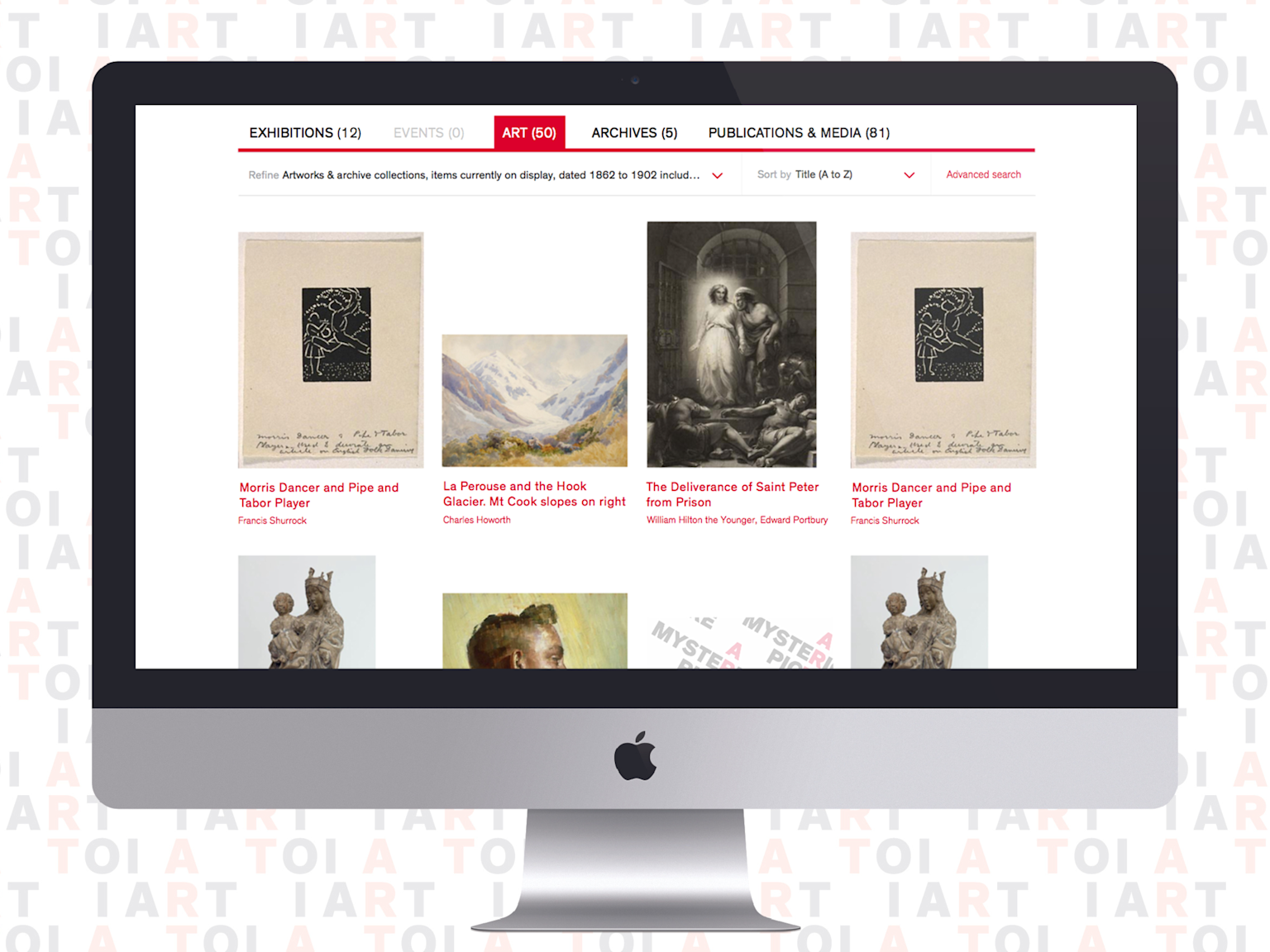
The new Auckland Art Gallery website stands as a true extension of their in-gallery experience and brand.
It was not only the first website we developed for RFA but also a key driver in the creation of the Common Capabilities Platform. This platform has become the backbone for RFA’s digital transformation, supporting all subsequent projects.
Our grid system showcases images of various shapes and sizes, maintaining a consistent rhythm while allowing each artwork to shine. The vast white spaces reflect the gallery’s airiness, providing a perfect backdrop for their impressive collection. This design approach creates a seamless transition from physical to digital, allowing visitors to experience the Gallery’s ambiance from anywhere.
A key goal was to enhance online engagement with the collection. We addressed this by catering to both art experts and casual visitors. For art experts, we overhauled the advanced search functionality, adding numerous search fields and filtering options. For casual visitors, we promoted organic exploration through interlinked content, tags, and related artworks, encouraging users to discover and enjoy the collection at their own pace.
Just like our clients we are always learning, the challenges we worked through with RFA as part of this process laid a great foundation for our future partnership.
Embrace Constraints: Constraints drive creativity, leading to innovative designs like our dynamic art grid.
Client Collaboration: Constant involvement ensures mutual understanding and ownership.
User Engagement: Design for both experts and casual visitors to make art accessible.
Modular Design: Ensures consistency and ease of future updates.
API Integration: Allows the Common Capabilities Platform to grow and evolve, connecting with other business units.
The new Auckland Art Gallery site is a dynamic, engaging digital extension of their physical space, designed to inspire and connect art lovers everywhere. This project showcases how thoughtful design and collaborative processes can create a powerful, flexible digital experience that enriches the community and celebrates art.
